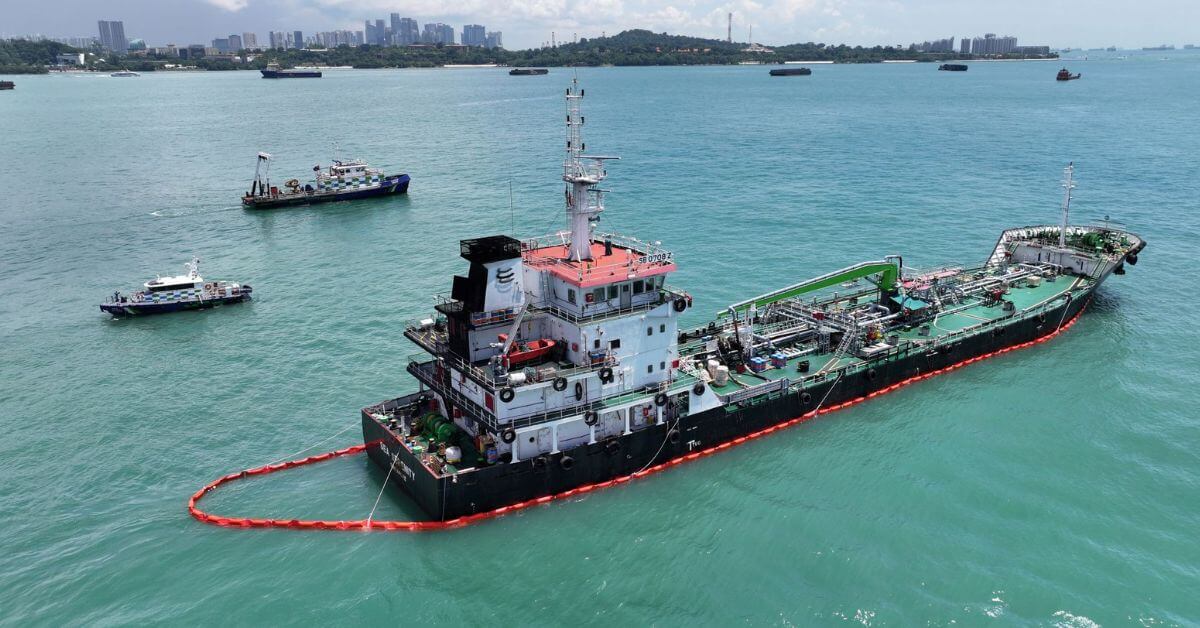Singapore Tests Advanced Oil Spill Response Technologies To Improve Incident Management
Singapore Hosts 16th Oil Spill Drill to Test New Technologies and Improve Emergency Response

Singapore Tests New Ways to Handle Oil Spills at JOSE 2024
Singapore recently hosted the 16th Joint Oil Spill Exercise (JOSE) as part of the 23rd Singapore International Bunkering Conference. This large event was organized by the Maritime and Port Authority of Singapore (MPA) to make sure the country is ready to handle any oil spills in the busy Port of Singapore.
The first JOSE was held in 1998, and since then, it has been held every two years to practice coordination between government agencies and private companies. JOSE 2024 included two major activities:
- A tabletop exercise, where participants practiced emergency plans on paper.
- A real-time exercise at the Western Anchorage, near Pasir Panjang Terminal.
Over 100 people from 18 different agencies and companies joined the exercise, and some environmental and community groups were invited to observe the activities at sea.
Teams Put Oil Spill Response Plans into Action
During the exercise, operators from Jurong Island and Pulau Bukom activated their emergency procedures. They sent out boats to spray dispersants, chemicals that help break down oil on the water’s surface. These vessels worked alongside the MPA’s patrol boats to control the spill.
To contain the spread of oil, several operators also deployed protective booms. These floating barriers help stop oil from spreading further and reduce the time needed for cleanup.
MPA Showcases New Oil Cleanup Technologies
JOSE 2024 also gave Singapore a chance to try out new tools for oil spill response. One of the highlights was the KOBOT, a small, remote-controlled oil recovery robot built by KOAI Co., Ltd. of South Korea with support from Hyundai Corporation. The demonstration took place at ONE°15 Marina Sentosa Cove.
KOBOT measures 4.5 meters by 1.5 meters and weighs 160 kilograms. Its small size makes it perfect for working in narrow spaces like marinas and canals. The robot can be operated remotely by one person and can be launched using a lightweight crane, making it useful in hard-to-reach places where traditional skimmers may not work.
In addition, BKR Engineering from Singapore demonstrated their laser cleaning technology, which removes oil stains using light beams. This method, combined with high-pressure water jets, helps clean surfaces like canal walls and rock bunds, where precise cleaning is needed.
Testing New Ways to Detect Oil Beneath the Water
Another experiment involved hyperspectral imaging technology, which the MPA is testing at the Technology Centre for Offshore and Marine Singapore (TCOMS) and ST Engineering’s Commercial Aerospace facility. This special camera technology can detect oil slicks below the water’s surface by capturing a wide range of light wavelengths.
Unlike regular cameras, hyperspectral cameras can identify oil even in low light or difficult weather conditions. While this technology shows promise, more research is needed before it can be used in drones or other field operations.
Singapore Stays Ready to Handle Oil Spills
Exercises like JOSE 2024 help Singapore stay prepared for emergencies in its busy port. By bringing together experts from various industries and testing the latest technologies, Singapore aims to reduce the impact of any future oil spills and ensure the safety of its waters.
